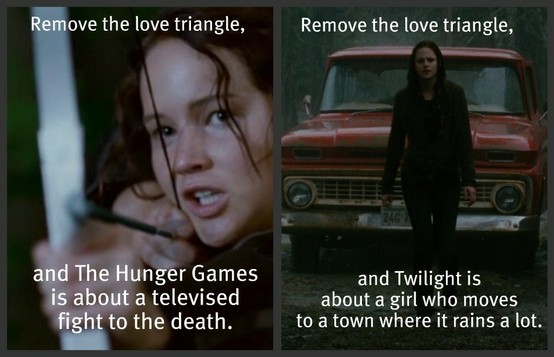The first issue to discuss with your students is the lack of female roles that continues to occur in our Young Adult Stories. A study of Young Adult fiction was conducted in 2006 titled Gender Stereotyping and Under-representation of Female Characters in 200 Popular Children’s Picture Books: A Twenty-first Century Update analyzed 200 books, including various Caldecott Award-winning samples from 7 different years. Their studies determined that there are nearly twice as many Male protagonist as there are Female. They also found that when comparing works from the 1980s to the 1990s, there was no found decreased instances of sexism. This is not only a good way to set up this problem found in our works of fiction, it also demonstrates how this is still a pervasive problem in our pop culture, which is good to set the background up on this issue.
A good way to illustrate the lack of proper representation for women in literature is make use of Bechdel Test and the Mako Mori Test. Both of these are test that while originally applying to film, can be used to judge the presence of well written female characters within any work of fiction. By using these tests on the most popular young adult novels, you can illustrate what an issue it is to see which books aren't able to cover what is considered the bare minimum for well written Female characters in fiction. Also, if students want to read something that passes either or both of these tests, here is a list of books that pass these requirements.
Its one thing to see if a story has female characters, but its another thing to make sure that the story reinforces good characteristics for women to have. While both of these test are a good starting off point to seeing if a story does a good job giving us women characters, passing them doesn't mean that these stories and characters are going to be well developed or empowering. A great example to show off is the Twilight series, which despite passing the Bechdel test (note: not the Mako Mori Test) is a shining example of a YA story rife with misogyny (see: Why do so many grown-ups hate Bella?). So when you are teaching about female representation, you need to be wary of tropes in these stories and what gender implications they might have (e.g. Manic Pixie Girls, Mary Sues, Love Triangles, and the Friend turned Lover).
One of the more challenging aspects to teaching proper female representation in the classroom is that too often, teachers will end up only teaching "White Feminism", feminism from only the perspective of white, middle-class and above, heterosexual women (here's a Huntington Post Video going into further explanation). While White Feminism on its own serves a lot of benefits, it provides too narrow of a perspective in order to cover all of the issues that women face. Even when our Young Adult stories provide strong, well developed, female characters; there's a good chance that said well developed female character is going to be white. Have your students go over the books that passed the Bechdel Test and the Mako Mori Test that contain characters who don't fall into this category of White Feminism. This will show your students how even though there are less well developed females in YA Novels, there are even fewer for women of color, LGBTQ+ women, and lower class women. A good follow up for your students to engage in is this discussion titled BLACK GIRLS HUNGER FOR HEROES, TOO, and look to a recommended reading list for Black Feminist YA Novels.
One last thing that should be noted is that while there is a need for strong, non-submissive female characters; We as teachers to be careful that we do not reinforce the idea that "traditional femininity" is bad. By all means, we should absolutely be teaching our students that we shouldn't immediately fall into something based on our gender. However, we can't reinforce this idea any boy or girl who falls into the traditionally masculine and traditionally feminine are less strong or less progressive as individuals. Doing so could easily do more harm than good. To illustrate this point, former pop culture analyst Bob"MovieBob" Chipman for The Escapist Magazine speaks about this potential issue in one of his videos titled The Big Picture: PINK IS NOT THE PROBLEM. This is a good video to show your students as it not only deconstructs the idea of the gender binary, but it also is a good jumping off point for discussing how students should properly address gender issues without misapplying the messages of these lessons in gender representation.
As teachers, it is our job to teach the future generations how to survive in our ever changing world; with one of the more important issues being misogyny and women's representation. By using these various discussion points with help of these various links, we can help students learn about the effects and reasons behind sexism in our society.


.jpg)


No comments:
Post a Comment